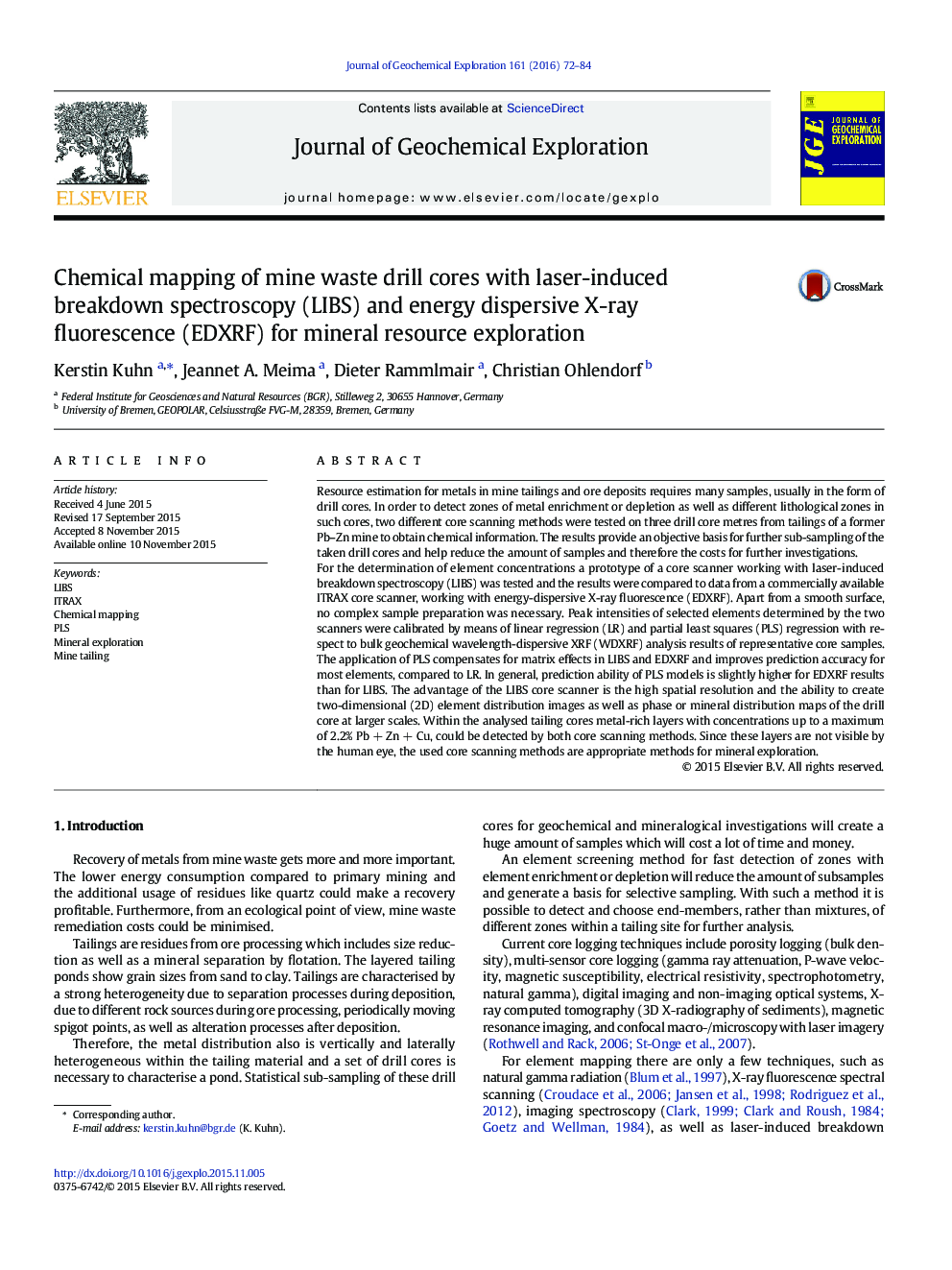| کد مقاله | کد نشریه | سال انتشار | مقاله انگلیسی | نسخه تمام متن |
|---|---|---|---|---|
| 4456962 | 1620898 | 2016 | 13 صفحه PDF | دانلود رایگان |

• LIBS and ITRAX drill core scanner are compared for heterogeneous tailing cores.
• Multivariate calibration like PLS is recommendable for both techniques.
• Both scanning methods reveal similar element distribution patterns.
• Economically relevant metal-rich layers in drill cores can easily be detected.
• LIBS 2D phase distribution maps are suitable for mineral exploration.
Resource estimation for metals in mine tailings and ore deposits requires many samples, usually in the form of drill cores. In order to detect zones of metal enrichment or depletion as well as different lithological zones in such cores, two different core scanning methods were tested on three drill core metres from tailings of a former Pb–Zn mine to obtain chemical information. The results provide an objective basis for further sub-sampling of the taken drill cores and help reduce the amount of samples and therefore the costs for further investigations.For the determination of element concentrations a prototype of a core scanner working with laser-induced breakdown spectroscopy (LIBS) was tested and the results were compared to data from a commercially available ITRAX core scanner, working with energy-dispersive X-ray fluorescence (EDXRF). Apart from a smooth surface, no complex sample preparation was necessary. Peak intensities of selected elements determined by the two scanners were calibrated by means of linear regression (LR) and partial least squares (PLS) regression with respect to bulk geochemical wavelength-dispersive XRF (WDXRF) analysis results of representative core samples. The application of PLS compensates for matrix effects in LIBS and EDXRF and improves prediction accuracy for most elements, compared to LR. In general, prediction ability of PLS models is slightly higher for EDXRF results than for LIBS. The advantage of the LIBS core scanner is the high spatial resolution and the ability to create two-dimensional (2D) element distribution images as well as phase or mineral distribution maps of the drill core at larger scales. Within the analysed tailing cores metal-rich layers with concentrations up to a maximum of 2.2% Pb + Zn + Cu, could be detected by both core scanning methods. Since these layers are not visible by the human eye, the used core scanning methods are appropriate methods for mineral exploration.
Journal: Journal of Geochemical Exploration - Volume 161, February 2016, Pages 72–84